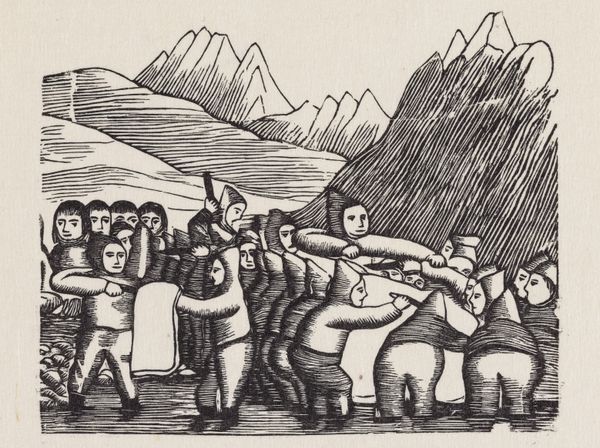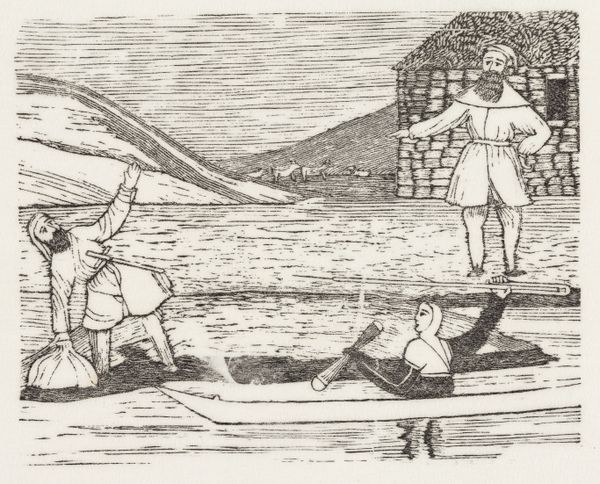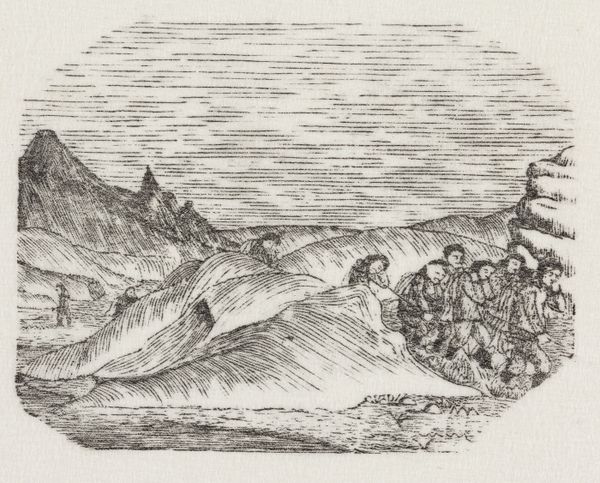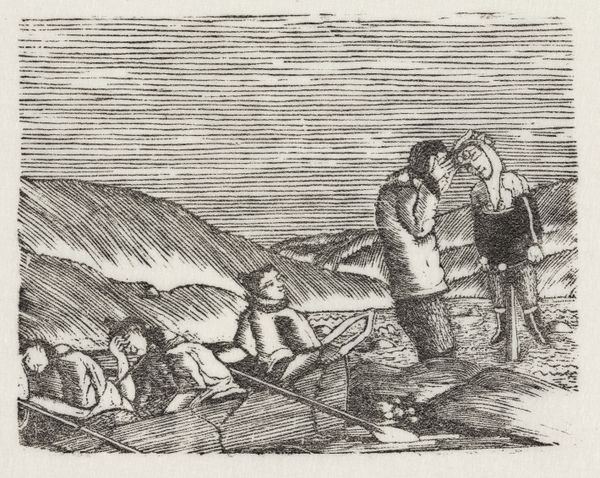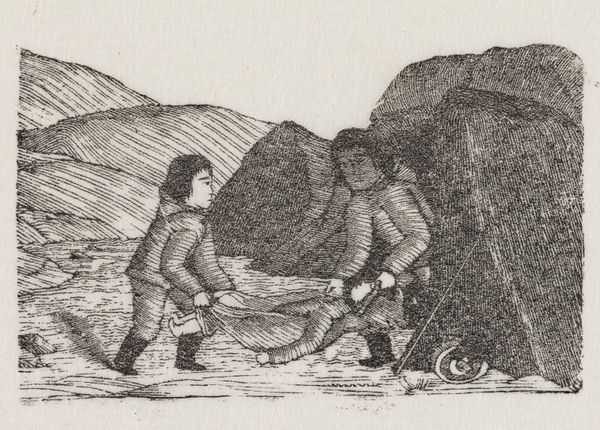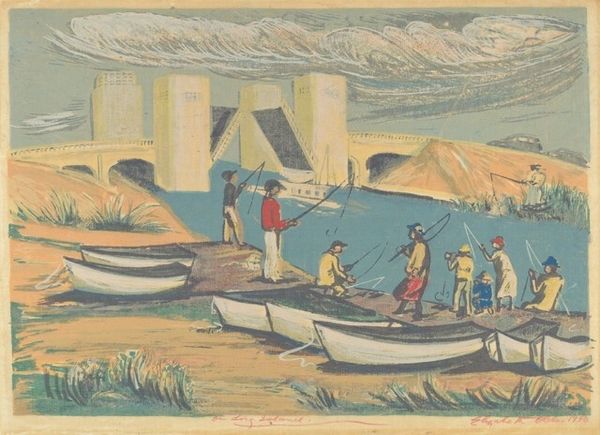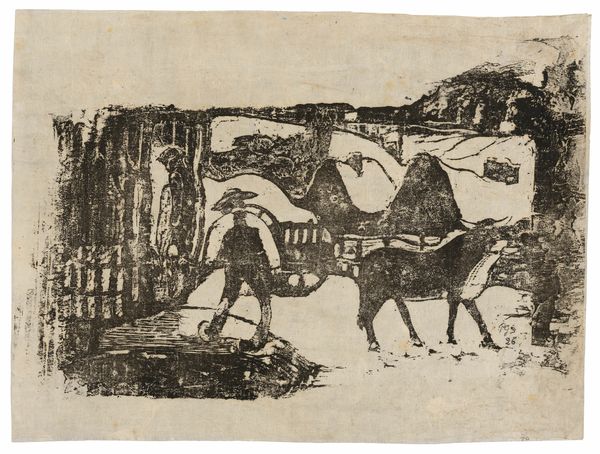
Fortællingen om Kênake den ubeskuelige: Den usynlige Kênake driver gæk med hvalfangerne, sin faders drabsmænd 1859 - 1860
0:00
0:00
drawing, print, paper, ink, woodcut
#
drawing
#
narrative-art
# print
#
figuration
#
paper
#
ink
#
woodcut
#
line
#
indigenous-americas
Dimensions: 89 mm (height) x 173 mm (width) (billedmål)
This engraving by Aron from Kangeq depicts the tale of Kênake, an invisible figure outwitting whalers, his father's killers. The rifles clutched by the whalers point to conflict, and the seated figure observing from above brings to mind notions of surveillance, destiny, or divine intervention. Consider the motif of invisibility—a potent symbol found across cultures. Invisibility cloaks characters like Perseus, who uses it to slay Medusa. These stories often convey a sense of empowerment, suggesting a deeper psychological desire to overcome limitations and societal constraints. This symbol of invisibility, so powerfully rendered here, is not merely a plot device but a window into our collective unconscious, echoing ancestral fears and longings. The story etched here is a powerful force engaging viewers on a deep, subconscious level, as it captures Kênake’s triumph over those who wronged his father. The symbols are not static, but are constantly revisited, reinterpreted, and reintegrated into new narratives.
Comments
No comments
Be the first to comment and join the conversation on the ultimate creative platform.

